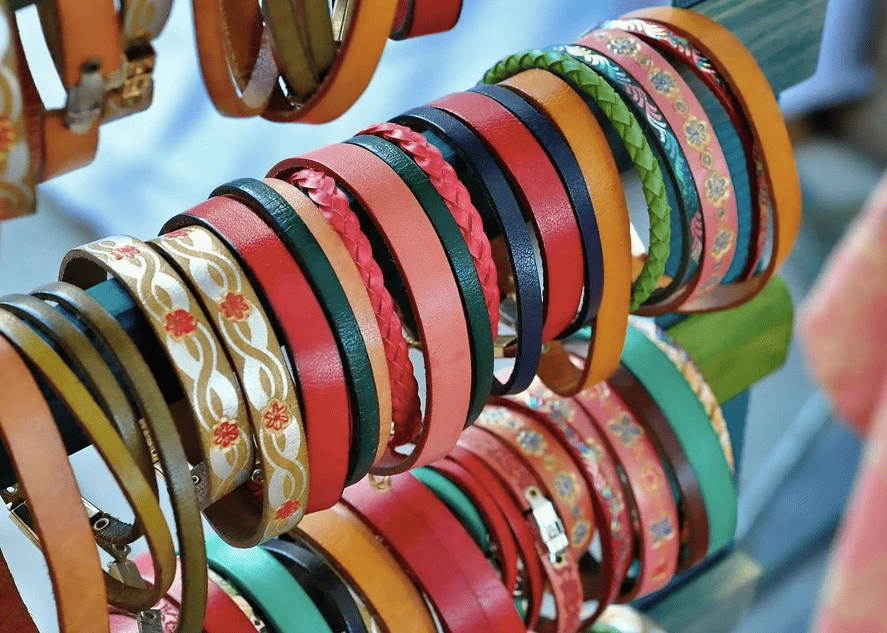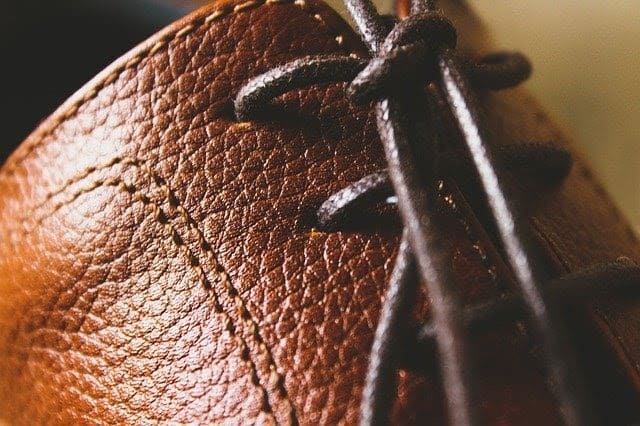 Get colorful, stylish!
Get colorful, stylish!
Color plays an important role in enhancing the appearance and vibrancy of our surroundings, from clothing (such as leather garments) to furniture, vehicles, or even in the animal kingdom, where the most colorful species often stand out.
It also has the power to influence a person’s temperament, even affecting mood changes that vary from individual to individual. So, it’s not uncommon to hear people refer to green as a natural color, or blue as one that evokes a sense of freshness.
When it comes to leather, color can have a significant impact depending on the shade chosen. There are many different types of dyes, finishes, shades, and styles available that are sure to catch the eye of Qiwa’s clients.
Below, we explore some of the most important and commonly used dyeing methods. First, it’s important to note that the primary color of leather depends entirely on the tanning method used. For example, vegetable-tanned leather takes on a brown hue, synthetic tanning produces white leather, and chrome-tanned leather tends to have a bluish-gray shade.
The dyeing process itself is divided into two types: one in which the dye penetrates the leather entirely, coloring it from both sides, and the other in which the pigmented area is colored on the surface in addition to being dyed internally. Let’s examine these two types in more detail.

Color-Dyed Leather
After tanning, leather is usually dyed first by immersing it in large vats of dye. The dye is later fixed, and any excess is rinsed off to avoid over-saturation. Since dyes are transparent, only darker colors can be applied, most of which are known as aniline dyes. In the past, azo dyes were used for similar purposes but were banned for being harmful.
Pigmentation
After dyeing, a protective layer of pigmented paint is often sprayed onto the leather. This is especially common for furniture leather, wallets, clothing, and shoes. This type is easily identified by rubbing a small amount of water on the surface: if the water does not penetrate, it is pigmented leather. Smooth leathers are often classified according to the thickness of the pigment layer applied.
For instance, aniline leather has no surface color layer. Semi-aniline leather has a thin paint layer, with hair pores still visible. Pigmented leather, on the other hand, comes in many colors, with hair pores barely or not at all visible.
By now, it’s clear that dyeing leather is more an art than the science many tend to assume. The process type, the artisan’s skill, and years of industry experience all contribute to the flawless results Qiwa prides itself on.
The leather dyeing process involves three basic stages: preparation, dye application, and finishing with a topcoat.
 Even Elvis appreciates fine leather
Even Elvis appreciates fine leather
Preparing Leather for Dyeing
This step revisits the tanning process briefly to determine the number of protective layers and conditioners used on the leather, as well as to treat dust and dirt that may have accumulated over time. Proper preparation ensures the leather surface is as clean and flawless as possible so that the dye adheres evenly.
Applying the Dye
After preparation, it’s essential to mix the dye thoroughly. Useful tips include stirring any settled dye at the bottom of the container or shaking it to ensure even consistency. Dye can be applied using a cloth, sponge, or for large surfaces, a spray gun or airbrush to ensure even coverage.
Multiple layers may be required, often three to six, allowing each layer to dry completely before applying the next. Horizontal strokes are recommended from the second layer onward, alternating directions with each coat. For lighter shades, a white base layer is used, while darker shades start with a black base.
A tip for yellow dye: apply a white base first, then yellow for a more vibrant and smooth result, as yellow dyes are slightly translucent.
Allow the leather to dry for at least 24 hours, lifting and flexing it periodically to avoid stiffness. Gloves should be worn as the leather may feel sticky initially, which disappears after polishing or applying shine. Polishing with a cloth removes excess dye and gives the leather a polished look.
 Nothing more satisfying than a freshly finished masterpiece
Nothing more satisfying than a freshly finished masterpiece
Mixing Colors
Yellow + Blue = Various greens
Yellow + Red = Shades from orange to red
Red + Blue = Dark violet to light lavender
Red + Violet = Wine tones
Brown + Yellow = Tanned or golden brown
Brown + Red = Dark brown
Finishing with a Topcoat
After dyeing and drying, a topcoat protects the leather from peeling and preserves its finish. Options include satin acrylic, glossy with carnauba wax, and matte acrylic finishes.
Pigmented Protective Topcoat
Commonly used for vehicle and motorcycle leather, this opaque leather paint ensures durability and uniform color.
Stay tuned for Part II of this blog, where we’ll explore the different types of leather color finishes…
Looking for Leather Garments and Accessories in Your Favorite Colors?
Qiwa is a family-owned business with 30 years of experience crafting high-quality leather goods, automotive upholstery, and jackets. We create premium leather products under our brand and collaborate with designers, supporting various entrepreneurial projects.
We offer a wide range of leather items, available in standard finishes or custom colors according to your preferences.
Learn more about our history here and browse our product catalog here. Contact us directly here.